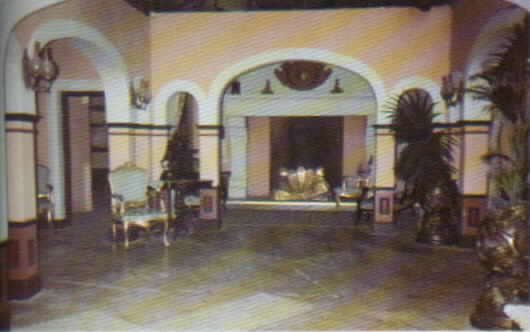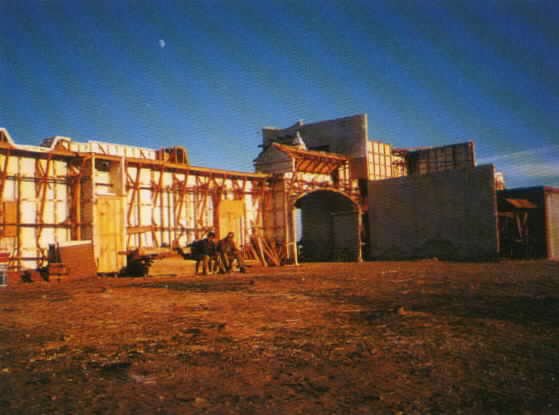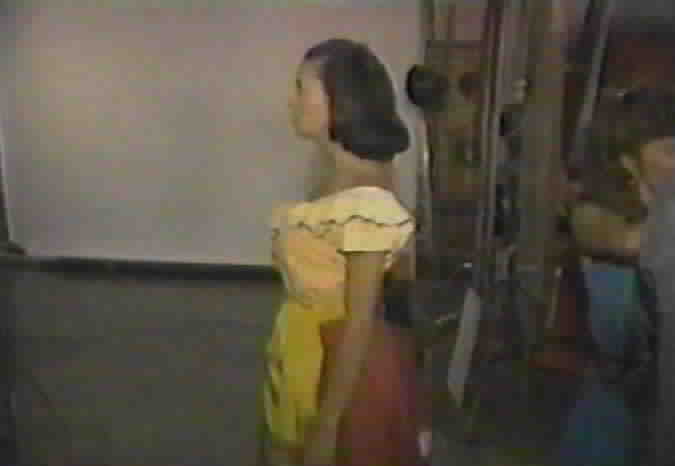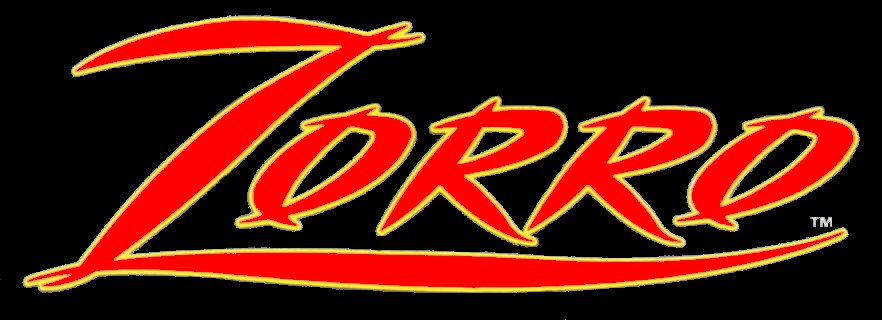
|




 



 |
ZORRO: The SeriesProduction Notes |
|||
| New World Television's "ZORRO" brings back to television the legendary exploits of the masked defender of old California after an absence of almost thirty years. An international co-production of New World Television , The Family Channel, and Ellipse Programme/Canal Plus of France, ZORRO is filmed entirely on location at studio facilities just outside of Madrid in Spain. Recreating the 18th century world of the Spanish Dons and Seņoritas of the rancho society of early California in Spain was a formidible task and challenge for the producers, cast and crew alike. | |||
| Since California in 1820 was a Spanish borderland frontier, researchers from the Spanish National Archives and the California Historical Society provided the production with volumes of material which included wardrobe sketches, photographs, manuscripts on manners and customs, military uniforms, and weapons of the period. Costume designers went about creating original wardrobe for the principal actors as well as for guest players. Clothing had to be assembled to dress extras as citizens of the pueblo and uniforms for a full military garrison. Textile merchants and warehouses in Madrid were combed for fabrics that would approximate the look of the period wardrobe. Silversmiths and leather craftsmen were sought to recreate items of dress worn by Spanish noblemen and vaqueros. | 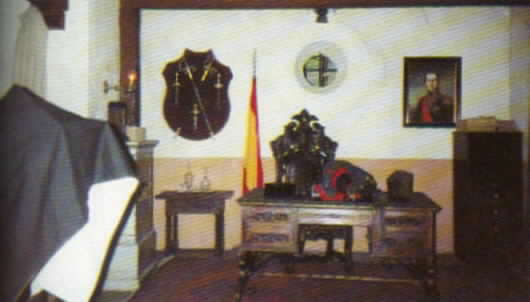
| ||
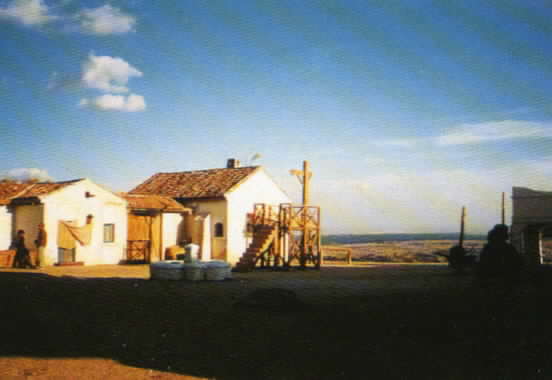
|
Art directors have constructed a detailed recreation of the pueblo of Los Angeles circa 1820 based on the original plans on a 34-acre studio lot just outside of Madrid. 50 carpenters, 15 craftsmen, 35 laborers and 25 painters were utilized by the production for a period of seven weeks to construct the main set. This magnificent exterior set, complete with church plaza, military garrison, rancho haciendas, adobe structures, cantina, and main street, was designed with practical interiors to accomodate some interior filming when needed. | ||
| Duncan Regehr and the rest of the cast had to break in their costumes so they would feel comfortable and natural on camera wearing 18th century clothing. They took to wearing their wardrobe in their residences prior to the beginning of filming. One night they held a cast party in a famous downtown Madrid restaurant, and all the actors arrived in costume to the astonishment of the restaurant patrons . Regehr discreetly left his Zorro costume at the hotel and came dressed as Don Diego. | |||
| Before undertaking the role of Zorro, Regehr, who as a classically trained Shakespearean actor was familiar with fencing, had to undergo hours of vigorous training with stunt co-ordinator and fencing master Peter Diamond in order to approximate the intricate swashbuckling moves for the cameras. Especially trained movie horses had to be located and brought to Madrid so they could be readied for their work on Zorro. Since few Westerns are made in today's cinema of fast car chases and crashes, stunt horses and stunt men capable of riding and executing various stunts are becoming increasingly rare. Mules, burros, and vehicles of the period including wagons and buggies had to be located. The actors were also put through a training period of learning to ride with a Spanish saddle and in the use of various weaponry including swords and flintlock pistols. | 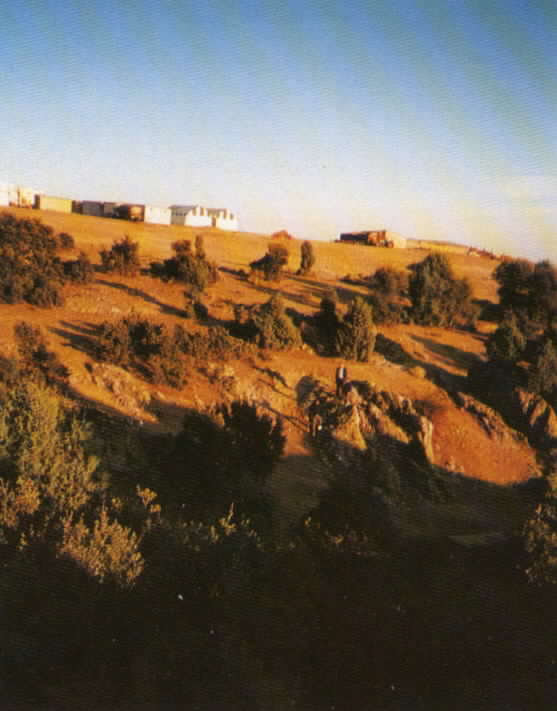
|
||

|
For former "F.B.I." series star Efrem Zimbalist, Jr., used to modern automatic weapons and three piece suits, Zorro is a major step back to a more romantic era. For beautiful Patrice Camhi, who plays Seņorita Victoria Escalante, the corsets and layers of embroidered lace undergarments along with the full dresses added 25 lbs of weight which she had to carry gracefully. "I don't know how women in those days could wear all this clothing especially in the heat of Los Angeles," remarked Patrice who is somewhat used to wearing period costumes due to her extensive stage work in classical theatre in both England and the U.S. Many of the props and decorative items are faithful recreations of the original items created by the many talented Spanish and French craftsmen working on Zorro. Certain irreplaceable one of a kind items have been given on loan to the production by various historical societys and museums. These articles are placed under lock and key until they are needed on the set and an armed guard looks after them 24 hours a day. These items include a diamond bracelet and necklace of the period, gold jewelry made in Mexico City in the 1700's, and church related ornaments belonging to the Franciscans who were the religious order of priests who founded the California Missions. | ||
|
"In Spain we are fortunate to have some of the finest and
experienced film technicians and craftsmen," says supervising
producer Bob McCullough. "The quality and the production
values on Zorro are on the screen and are certain not to
go by unnoticed."
This text is taken from the 1990 press kits for "Zorro." |
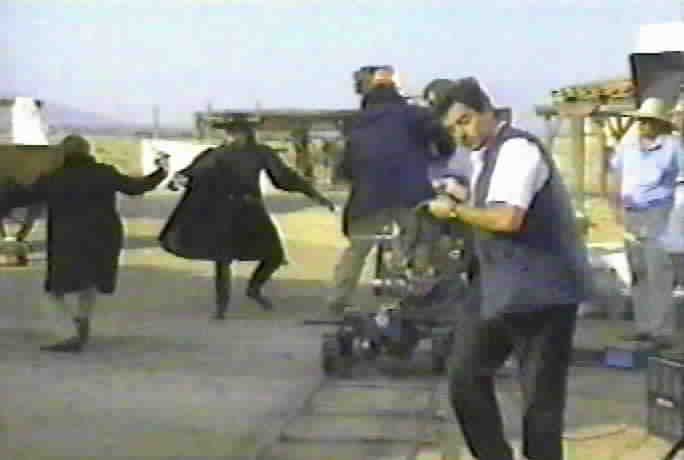
|
||
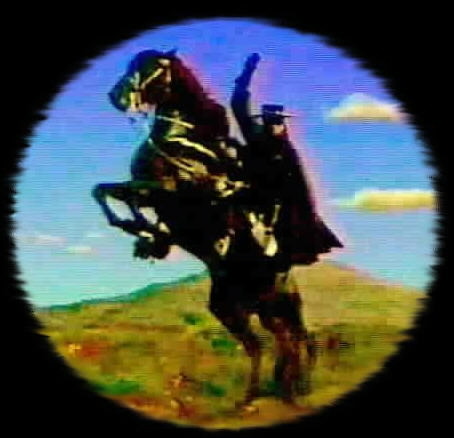 |




 



 |
 |
